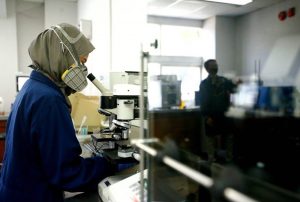Indonesia has vast potential. Despite numerous setbacks since its independence in 1945 — including the 1997 Asian financial crisis — the country is now the largest Southeast Asian economy and a member of the G20. Traditionally an agrarian economy, Indonesia is transitioning towards more services and manufacturing employment.
These efforts have been promoted by strong government intervention. Indonesia actively pursues industrial policies to increase the capacity of its enterprises, which are mainly state-owned, in order to compete with foreign firms in the global value chain.
To achieve high-income status, Indonesia has to be more competitive, as it only ranked 50th out of 141 countries in 2019.
The odds of middle-income countries reaching high-income status are small. Only 16 developing economies leaped to high-income status between 1960 and 2014 and many did so through good fortune or by joining the European Union.
Other successful economies, notably South Korea, Japan and Singapore, did so by embracing an export-powered and innovative economy. In each jurisdiction, the state intervened to address market failure or boost domestic firms in selected industries to flourish.
In Indonesia, the government is the main contributor to research and development (R&D), with the private sector only accounting for around 20% of spending. In 2021, Indonesia centralized R&D under the National Research and Innovation Agency, which mimics the Singaporean model.
Indonesia can learn from its failures, such as when it attempted to jump-start innovative industries by forming high-tech industrial clusters like the aircraft industry. It failed because there was no domestic industrial base to provide raw materials such as steel and aluminum.
This contrasts with South Korea which has successfully built comprehensive high-tech industries from upstream to downstream.
The Indonesian government now seems serious about investing in and enhancing innovation as a means of economic development.

But its strategies are missing a critical component — intellectual property (IP). The government has yet to realize that IP is instrumental to the promotion of innovative capacity and an essential component of sustainable economic growth.
The Industrial Revolution illustrates the preeminence of Western countries in lifting humanity out of its Malthusian trap since the nature of invention was democratized, allowing anyone who produced new ideas capable of commercial and industrial application to be protected by IP rights.
Of course, the rate of invention is not always proportional to the size of the population as governments must nurture innovative capabilities.
This has not always been the case for Indonesia. Its huge population and strong central government can be liabilities as public spending is often focused on social welfare, not education or individual advancement. Indonesia has the lowest R&D and tertiary education spending among G20 countries.
For this reason, its innovative capabilities are lagging behind world development. Since 2016, 2912 overseas patents registered under the Patent Cooperation Treaty have been granted in Indonesia, while only 751 Indonesian patents have been granted.
Indonesia’s industrial policy in the last decade has focussed on promoting non-tariff measures such as local content requirements as well as tax incentives to direct investment downstream across various sectors, from mining to manufacturing.
The success of such an approach is questionable as the policies have not yet boosted the global competitiveness of these industries. The manufacturing sector still depends on domestic demand and only a few products make up the most significant exports.
It is time for Indonesia to rethink its priorities and industrial policy to embrace the notion of an innovative economy. Knowledge accumulation through higher education and targeted skill acquisition will allow the country to jump over the learning curve.
In this way, Indonesia can access ideas and foreign technologies before further improving on them in the same way the early-industrializing Asian economies did in the 1960s–90s.
To do so, Indonesia must get the mix of policy initiatives right. The impetus should be about encouraging innovation and invention in ways that will justify more robust IP protection.
The pharmaceutical industry would be a beneficiary of a new and revitalized innovative economy. Indonesia is keen to become a regional pharmaceutical hub, but the transformation will not be easy. North American and European firms dominate the pharmaceutical patent landscape, while Chinese and Indian firms manufacture cheap generic brands under license.
Indonesia desires to be an innovator and a low-cost manufacturer, yet it also seeks to assist downstream interests by requiring local content requirements to facilitate sales to the government.

Becoming an innovator will be difficult without careful planning and policy development as the country lacks a strong industrial base and currently has low levels of R&D. Competing as a manufacturer will also take time as producers must find ways to cut costs and develop the raw materials industry.
Indonesia must ensure that its IP framework is optimal and allows the country to leverage, leapfrog and progress in both developing new drugs and becoming a trusted licensee for manufacturing.
Indonesia’s growth prospects will not advance without a stronger culture of innovation. The country must shift the priorities of its industrial policy and create an integrated system that encourages and promotes innovation and invention. The first step is to develop a strong upstream industrial base and subsequently develop downstream industries.
Ronald Tundang is a PhD Candidate at The Chinese University of Hong Kong. Bryan Mercurio is the Simon F.S. Li Professor of Law at The Chinese University of Hong Kong.
This article, republished with permission, was first published by East Asia Forum, which is based out of the Crawford School of Public Policy within the College of Asia and the Pacific at the Australian National University.

